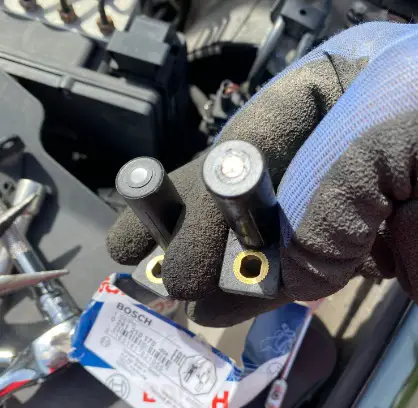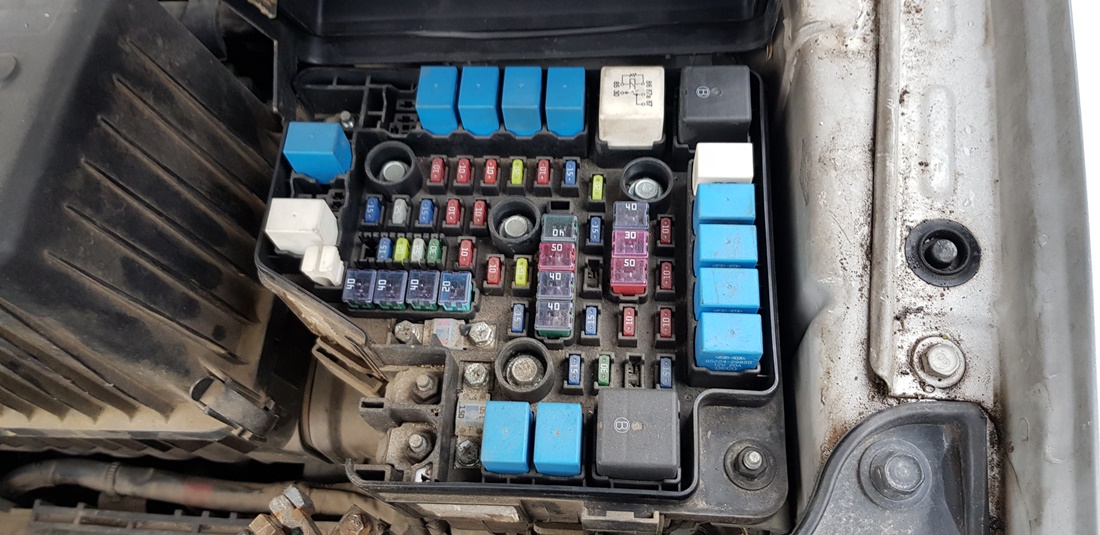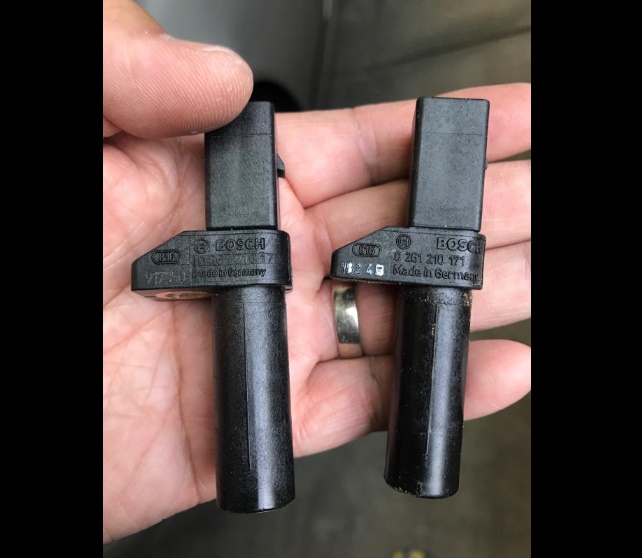You get in your car, turn the key, and step on the gas. You shift into gear but nothing happens. Then, you re-shift only to hear a whirring sound. Then, you release the clutch and find that there is no tension on it. What’s wrong? It is time to change your transmission fluid.
Transmissions are what make vehicles move from point A to point B. They transfer the power produced by the engine through different gears. The gears allow drivers to go faster or slower depending on road conditions and driver input.
It takes hydraulic pressure provided by transmission fluid to activate clutches and bands used for gear changes. Without the proper level of transmission fluid, your car will not be able to function properly.
So, how often do you need to change your transmission fluid? Read on to find more as I go into detail.
- Key Takeaway
- How Often Do You Need To Change Your Transmission Fluid
- What is Transmission Fluid
- Signs That Your Car Needs Transmission Fluid Replacement
- Can I Drive My Car If The Transmission Fluid Is Low?
- Why Is It Dangerous To Drive If The Transmission Fluid Is Low?
- What Happens If u Don’t Change Transmission Fluid?
- Can Transmission Fluid Evaporate?
- FAQs
- Q: Why is it important to check my transmission fluid?
- Q: How do I check my transmission fluid?
- Q: How often should I change my transmission fluid?
- Q: What happens if I don’t change my transmission fluid?
- Q: Do I need to have a transmission flush or just a fluid change?
- Q: Can I change my transmission fluid myself, or do I need to go to a dealership?
- Q: What is the role of transmission fluid?
- Q: How do I know if my transmission fluid is low?
- Q: Can low transmission fluid cause any other problems?
- In Conclusion
Key Takeaway
- Typically, it’s recommended to change your transmission fluid every 30,000 to 60,000 miles, but this can vary depending on your vehicle’s make, model, and driving conditions.
- Transmission fluid is a lubricant used in the vehicle’s transmission system that helps to cool, clean, and protect the gears while ensuring smooth gear shifts.
How Often Do You Need To Change Your Transmission Fluid

The frequency of changing your transmission fluid generally ranges from every 30,000 to 60,000 miles due to the gradual breakdown of the fluid over time, which can affect transmission performance and longevity; however, specifics can vary based on the vehicle model, manual or automatic transmission, and driving conditions.
Manual transmissions may require more frequent changes.
However, there are also cases where it’s suggested that the fluid doesn’t need to be changed for up to 100,000 miles.
It’s important to note that these are general guidelines and the specific maintenance schedule for your vehicle might differ.
Always refer to your vehicle’s owner’s manual or consult with a professional mechanic for accurate information.
What is Transmission Fluid

When most people hear the term ‘transmission fluid’, they think of a red oil that is used in older cars.
Transmission fluid has been replaced by specialized transmission fluids, gums, and pastes. They have been engineered to work better with today’s modern automatic transmissions.
These liquids are meant to add more protection from wear and tear on your vehicle while making sure that everything works the way it is supposed to.
Transmission fluid history
The first car was invented in 1886. But, it wasn’t until a few years later when Karl Benz patented his three-wheeled motorwagen. It was later known as the Mercedes – which had a Daimler engine.
In fact, it was the first internal combustion engine mounted in the frame of a car. It was this invention that marked the beginning of the modern self-propelled automobile. With it came an increase in demand for transmission fluid.
The concept of automatic transmissions began soon after when Gottlieb Daimler designed the “manual marine gearbox” in 1897.
This fluid would be used to lubricate all different types of gears that were used by early cars, like manual transmissions or landline machines like steam turbines or water pumps.
Transmission fluids today
Today’s automatic transmissions are completely electronic and have no link to anything mechanical inside your car. So, changing them is usually unnecessary if you drive relatively little.
Even if your car is leaking transmission fluid from somewhere, it might be from a hose or gasket. It doesn’t mean that it is the actual transmission says Amsoil.
Signs That Your Car Needs Transmission Fluid Replacement
- Trouble Shifting Gears: Difficulty or delay in shifting gears can be a sign your transmission fluid needs replacing.
- Slipping Gears: If your vehicle slips out of gear while driving, it might be due to worn-out transmission fluid.
- Overheating: Your transmission can overheat if the fluid is old or low, often indicated by a warning light on your dashboard.
- Strange Noises: Hearing grinding or other strange noises when you change gears could point to a need for new transmission fluid.
- Unusual Smell: If the transmission fluid smells burnt, it’s likely time for a replacement.
- Leaking Fluid: If you notice a bright red or dark red fluid under your car, it could be a sign of a transmission fluid leak.
Can I Drive My Car If The Transmission Fluid Is Low?

Yes, if you are low on transmission fluid it can be very dangerous to drive your car. If you need to add transmission fluid, contact a mechanic or service center near you before driving your car.
The transmission has many different components inside it, such as gears that convert power from gasoline into movement and torque for your wheels.
The most important job of these gears is transferring power through them and then out of them by turning the wheels once they reach their maximum rotational velocity (i.e., vehicle speed).
Why Is It Dangerous To Drive If The Transmission Fluid Is Low?
It is dangerous to drive with low transmission fluid because if there isn’t enough transmission fluid, the components of the transmission could overheat and break down.
You don’t want to find yourself stuck without enough transmission fluid when you’re on a long drive.
Transmission fluid transfers heat from different areas of the engine and transmission to others where they are needed, as well as lubricating all of the transmission components.
What Happens If u Don’t Change Transmission Fluid?
- Overheating: The transmission fluid cools the transmission; without fresh fluid, the system can overheat, leading to damage.
- Dirty Fluid: Over time, the fluid collects debris, which can clog the transmission and cause mechanical problems.
- Poor Gear Operation: Old fluid can lead to poor gear shifting, causing a rough or slow response from the transmission.
- Damage to Transmission: If left unchanged for too long, the transmission can become seriously damaged, leading to costly repairs or even replacement.
- Decreased Vehicle Performance: Overall vehicle performance can decline, including fuel efficiency and acceleration.
Can Transmission Fluid Evaporate?
While transmission fluid is typically contained within an airtight system and does not easily evaporate, it can slowly diminish over extended periods due to factors like internal leaks, wear and tear, or in some cases, minimal evaporation through breather holes in automatic systems.
In addition, heat from the outside environment could also cause evaporation. If you keep your car running in high temperatures then it will only make the problem worse.
One way to help reduce this from happening is by keeping your vehicle’s air conditioning system on. It has a place where the hot air goes through to cool things down.
However, if you do not have an AC system or if yours does not work properly, there is a simple way to check if your transmission fluid has been evaporating.
All you need to do is touch the fluid to determine its viscosity. If it feels watery then that means that the level of transmission fluid in the differential has gone down and needs to be refilled.
You could also add enough diluted automatic transmission fluid or ATF in order for the rising level in the rear axle difference not to overfill when adding new fluid.
However, make sure you use a new ATF instead of a used one in order not to introduce impurities into your system. The longer you wait to replace evaporated transmission fluid, there will be more damage to the other components within the powertrain.
FAQs
Q: Why is it important to check my transmission fluid?
A: Checking your transmission fluid regularly is crucial to ensure that it is at the proper level and in good condition. Low transmission fluid can cause shifting issues, excessive wear, and overheating. It helps you find any potential problems early on and avoid costly repairs down the line.
Q: How do I check my transmission fluid?
A: To check your transmission fluid, park your vehicle on a level surface and engage the parking brake. Start the engine and let it idle for a few minutes. Locate the transmission dipstick (usually labeled and found near the engine). Pull out the dipstick, wipe it clean, reinsert it, and then pull it out again. Check the fluid level against the markings on the dipstick. It should be within the recommended range.
Q: How often should I change my transmission fluid?
A: As mentioned earlier, it is generally recommended to change your transmission fluid every 30,000 to 60,000 miles or every 2 to 4 years. Keep in mind that this can vary based on your vehicle’s make, model, and usage. It is best to consult your owner’s manual or contact a professional mechanic for specific recommendations.
Q: What happens if I don’t change my transmission fluid?
A: Failing to change your transmission fluid at the recommended intervals can lead to a variety of problems. Old fluid can become contaminated with debris and lose its ability to lubricate effectively. This can result in increased friction, excessive heat, and premature wear of transmission components. Neglecting fluid changes can also contribute to the breakdown of the transmission, requiring costly repairs or even the need for a new transmission.
Q: Do I need to have a transmission flush or just a fluid change?
A: Whether you need a transmission flush or just a fluid change depends on the condition of your current fluid. If the fluid is severely degraded or contaminated, a flush may be necessary to remove all the old fluid from the system. However, if the fluid is relatively fresh and in good condition, a fluid change may be sufficient. It is best to consult a professional mechanic for a proper evaluation and recommendation.
Q: Can I change my transmission fluid myself, or do I need to go to a dealership?
A: While it is possible to change your transmission fluid yourself if you have the necessary tools and knowledge, it is generally recommended to have it done by a trained professional. They have the expertise to properly drain and refill the transmission, check for any potential issues, and ensure that the correct type and amount of fluid are used. Going to a dealership or a reputable auto service shop will give you peace of mind and help maintain the warranty on your vehicle.
Q: What is the role of transmission fluid?
A: Transmission fluid serves multiple purposes in an automatic transmission. It helps to lubricate the moving parts, cool the transmission, provide hydraulic pressure, and facilitate smooth shifting. It also helps with cleaning and preventing the accumulation of debris and contaminants. Without proper fluid levels and quality, the transmission may experience performance issues and early wear.
Q: How do I know if my transmission fluid is low?
A: To check if your transmission fluid is low, you can follow the same steps as checking the fluid level (refer to the earlier question). If the fluid level is below the recommended range on the dipstick, it indicates that the fluid is low. Additionally, you may notice symptoms such as slipping gears, hesitation or delay in shifting, or strange noises coming from the transmission.
Q: Can low transmission fluid cause any other problems?
A: Yes, low transmission fluid can also cause other problems besides shifting issues. Insufficient fluid can lead to increased friction and heat, which can damage internal components and reduce the overall lifespan of the transmission. It is important to address low fluid levels promptly to avoid more severe and costly damage to your vehicle’s transmission system.
In Conclusion
The transmission fluid is an important part of keeping your car running smoothly.
Changing the transmission fluid regularly can help to avoid costly repairs in the future and keep your car running at its best.
Depending on how you use your car, it may be beneficial to have a regular schedule for changing the transmission fluid.




